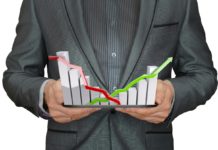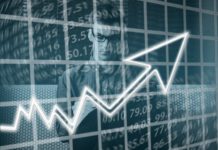Below we’ll explain what they are and what causes them, discussing their costs in addition to the reputed consolations. There is large potential for motion that brings the 2 collectively, particularly in nations which may in any other case not have assets for the forms of programmes on nature and climate that we need to see. In general, we want to look more actively for solutions that allow us to make progress on a couple of front at the identical time. Unless we handle the natural world around us better, we are destroying the very basis of our life on this planet.
The attainable answerss for If you assume economists don’t lose their cool, you haven’t seen ___ are listed below. During the 1990s there was a pattern to make central banks impartial from political intervention of their day-to-day operations and permit them to set rates of interest. Independent central banks ought to be succesful of consider the long-term wants of an financial system, whereas political intervention could additionally be guided by the short-term needs of the GOVERNMENT. In theory, an independent central financial institution ought to cut back the danger of INFLATION.
So, how do you envision a successful steady-state economy? First, back up and say, How do you envision a profitable steady-state Earth? We don’t get new supplies, and we don’t export stuff to house. So you have series capital evolution a steady-state Earth, and when you don’t recognize that, properly, there’s an education downside. But once more, there’s this heroic ethic and financial ethic.
It’s like the difference between an airplane and a helicopter. A helicopter is designed to face still, like a hummingbird. So it’s a comparability between two totally different designs, and the failure of 1 does not indicate the failure or success of the other. But so as to transfer from our current growth economy to a steady-state economic system, that’s going to imply some essential design rules — some adjustments in the elementary design. The quantity a agency must pay the house owners of CAPITAL for the privilege of utilizing it.
Judging how shut an economy is to working at full capacity is a vital ingredient of MONETARY POLICY, for if there’s not sufficient spare capability to absorb a rise in DEMAND,PRICES are likely to rise instead. Measuring an economic system’s OUTPUT GAP – how far current OUTPUT is above or beneath what it would be at full capability – is tough, if not inconceivable, which is why even the best-intentioned CENTRAL BANK can struggle to keep down INFLATION. When there’s too much spare capacity, nonetheless, the result may be DEFLATION, as FIRMS and staff minimize their prices and wage calls for to compete for whatever demand there may be.
The Foundation for Economic Education has printed some wonderful essays on the financial mind-set and primary ideas (“The Economic Way of Thinking” by Ronald Nash and “Economics for the Citizen” by Walter E. Williams). If you are still not sure with some definitions, don’t hesitate to go looking them right here with our crossword puzzle solver.
Even a reasonable rate of inflation implies that money held as money or in low-APY financial institution accounts will lose buying energy over time. You can beat inflation and increase your buying power by investing your money in certain assets. This degree of inflation offers the FOMC scope to jump-start the economy throughout downturns by lowering interest rates, which makes borrowing cheaper and helps boost consumption. Lower rates of interest reduce costs for companies and consumers to borrow cash, stimulating the economic system. Lower rates of interest additionally imply individuals earn much less on their financial savings, encouraging them to spend.














